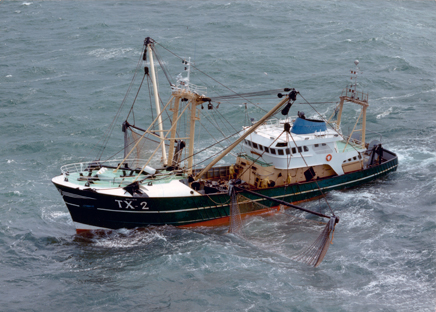Fisheries and Natura 2000
Commercial fishing refers to the harvesting of so-called commercial fish species from the sea. Removed fish is no longer available in the natural food web. The effects of that have, to date, not been properly identified. Time and time again, overfishing has led to situations in which the continued existence of specific species is threatened. The European Common Fisheries Policy therefore sets annual quotas for catching commercial species. Because the quotas are based on a figure that maximises the catch and makes sure that the species in question do not die out, the composition of fish stocks has changed considerably. Before 1980, more than 30 per cent of the catch weight of North Sea fish was made up of fish larger than 25 cm: in 2007, this was less than 10 per cent.

Other effects on nature
Commercial fishing in Natura 2000 areas is a major subject of discussion when drawing up management plans for the designated areas. The argument for a blanket ban on commercial fishing in protected areas contrasts with the suggestion that it is possible to negotiate a partial ban.
Apart from the direct effect of commercial fishing on relationships in the food web, certain fishing techniques have significant adverse effects on species that are not commercially fished (bycatch), and on the seabed and everything that lives there. Consider the damage that the beam trawl causes on the seabed and the quantity of microplastics that remains in the marine environment due to wear and tear of the so-called dolly ropes that are attached to the the nets to protect them. These are widely-discussed subjects in relation to the transition involved in making the fisheries sector sustainable.